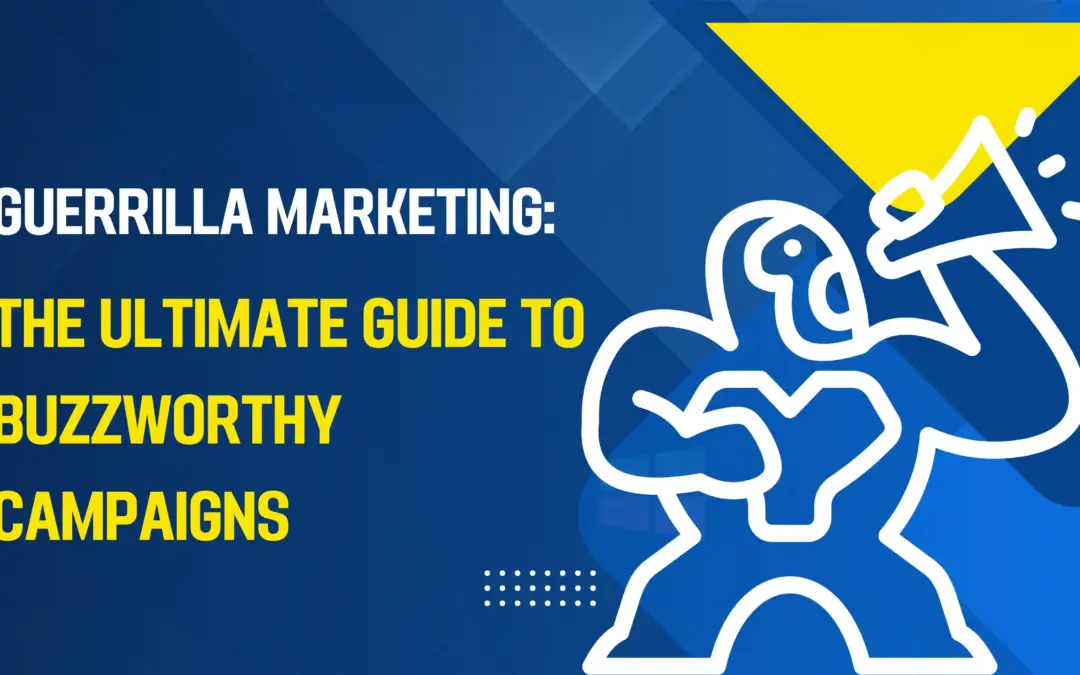Tired of shouting into the void with traditional ads? Feel like your marketing budget is disappearing without a trace? You’re not alone. In our attention-starved world, businesses need a smarter way to connect. That’s where guerrilla marketing comes in.
Imagine creating a marketing campaign so creative and unexpected that people stop in their tracks, pull out their phones, and share it with everyone they know. That’s the power of guerrilla marketing. It’s not about having a massive budget; it’s about having a massive idea.
This guide will break down everything you need to know, from the core psychology behind why it works to a practical blueprint for launching your own unforgettable campaign.
What is Guerrilla Marketing? (It’s Not What You Think)
At its heart, guerrilla marketing is an advertising strategy that uses unconventional, low-cost, and creative tactics to achieve maximum exposure and generate buzz. The term, coined by Jay Conrad Levinson in 1984, draws inspiration from guerrilla warfare—where a small, nimble force uses surprise and unconventional tactics to overcome a larger, more traditional opponent.
Forget Super Bowl ad slots. This is about winning hearts and minds through creativity.
Why Our Brains Love Guerrilla Marketing: The Psychology of Buzz
It works because it hijacks our attention in the best way possible. Here’s the science behind the surprise:
- The Element of Surprise: Our brains are hardwired to notice things that break patterns. A giant monster made of recycled materials on a city street? That cuts through the “ad blindness” we all have.
- Emotional Connection: These campaigns make us feel something—joy, curiosity, or nostalgia. We don’t just remember the ad; we remember the feeling, and we connect that feeling to the brand.
- The Shareability Factor: In the social media age, a clever guerrilla stunt is pure fuel for Instagram, TikTok, and Twitter. People become your brand ambassadors, gifting you priceless earned media.
- The Underdog Story: We naturally root for the clever and creative over the big and corporate. It makes your brand feel human and relatable.
Real-World Guerrilla Marketing Examples That Broke the Internet
Let’s move from theory to practice. Here are some legendary examples that demonstrate the power of a great idea.
1. The Unexpected Installation: IKEA’s “Staycation”
- The Idea: To promote a new store opening, IKEA didn’t just put up billboards. They transformed a public subway station in Paris into a cozy, fully furnished living room—complete with sofas, rugs, lamps, and bookshelves.
- Why It Worked: It was useful, surprising, and perfectly on-brand. Tired commuters got a comfortable place to sit, and IKEA demonstrated its value proposition (“Make your home a haven”) in the most unexpected place. It was a practical experience, not just an ad.
2. The Clever Stunt: Coca-Cola’s “Happiness Machine”
- The Idea: Coca-Cola placed a seemingly ordinary vending machine on a college campus. But when students used it, it delivered endless surprises—a whole pizza, a bouquet, even a giant sub sandwich. Their reactions of pure joy were captured on video.
- Why It Worked: It created authentic, positive emotions and generated a viral video that millions shared. It wasn’t about selling a soda; it was about sharing “happiness,” which is core to Coca-Cola’s brand message.
3. The Interactive Experience: Spotify’s “Wrapped”
- The Idea: While now a digital giant, Spotify’s annual Wrapped campaign is guerrilla in spirit. It uses personalized data to create a highly shareable, interactive experience for each user.
- Why It Worked: It’s all about the user. People love seeing their own story and sharing their musical identity with friends. It creates a global conversation every December, all powered by user-generated content.
Your Blueprint for a Successful Guerrilla Marketing Campaign
Ready to create your own buzz? Follow this actionable plan.
Step 1: Find Your “Big Idea”
Start with your audience and your brand truth. What will resonate with them? What is a core message you can tangibly bring to life? Brainstorm ideas that are:
- Simple: The message should be instantly understandable.
- Surprising: It must disrupt the everyday environment.
- Shareable: Think visually. Would you stop to take a picture?
Step 2: Navigate Logistics and Legality (The Most Important Step!)
This is where many campaigns fail. Creativity doesn’t override safety or the law.
- Get Permission: Always secure permits from the city or property owners. A rogue campaign can lead to fines, negative press, and your masterpiece being torn down.
- Prioritize Safety: Never create a hazard or something that could cause public alarm (e.g., a package that looks suspicious).
Step 3: Integrate and Amplify
The physical stunt is just the beginning.
- Hashtag: Create a unique, memorable hashtag to track conversation.
- Document: Have a photographer/videographer ready to capture high-quality content of people’s reactions.
- PR Outreach: Send your story and assets to local news outlets and relevant blogs before and after the launch.
Step 4: Measure What Matters
How do you know it worked? Track metrics like:
- Social media mentions and hashtag use
- Website traffic during the campaign period
- Local media mentions
- Increase in followers or newsletter signups
Common Pitfalls to Avoid
- Being Misleading or Creepy: Surprise should lead to delight, not fear.
- Ignoring Your Brand: The stunt must connect back to what you sell. A law firm doing a flash mob might feel inauthentic.
- Forgetting the Call-to-Action: What do you want people to do after they see it? Have you visited your website? Follow you? Make it clear.
Is Guerrilla Marketing Right For You?
If you’re a small business, non-profit, or any brand looking to make a big impact without a seven-figure budget, the answer is a resounding yes. It demands creativity, careful planning, and courage, but the reward—a memorable brand moment that people actively choose to engage with—is unmatched.
It’s not about outspending your competition. It’s about outthinking them.

